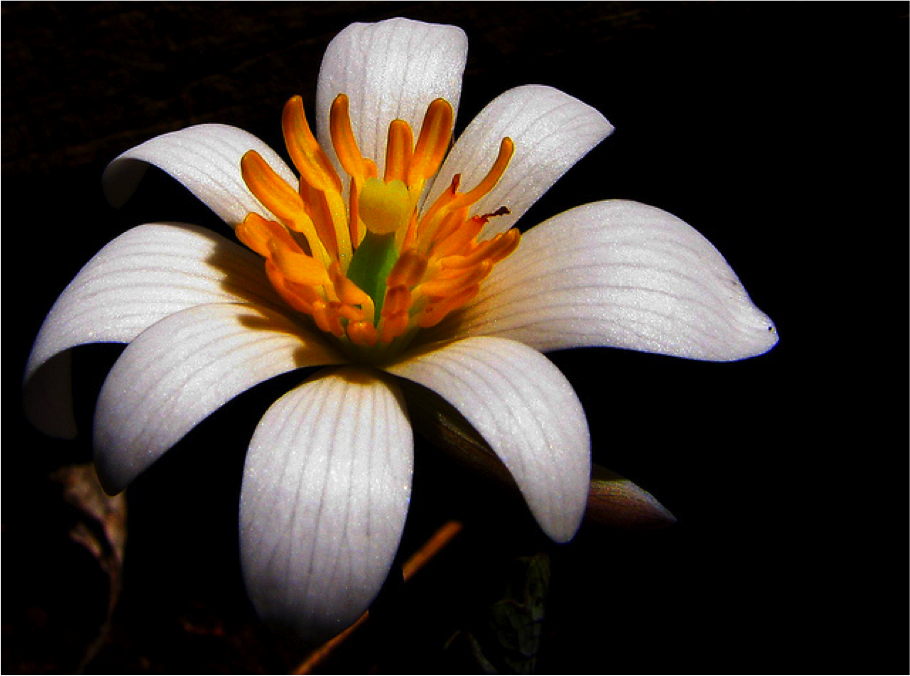
Habitat
 Bloodroot is typically found in the eastern
parts of the United States and Canada. They typically live in
colonies in wooded areas where the ground has steep slope, or on reasonably flat areas. Bloodroot requires soil pH to be slightly
acidic,
needs a moist environment, and needs partial to full shade. This
is why wooded areas are ideal for bloodroot to grow in. Because
of where it lives, many other organisms inhabit the same area as
bloodroot. Examples include black bear, whitetail deer, snakes,
grey squirrels, frogs,
horseflies,
dragonflies, birds, willow trees , maple tress,
grasshoppers and many
others.
Bloodroot is typically found in the eastern
parts of the United States and Canada. They typically live in
colonies in wooded areas where the ground has steep slope, or on reasonably flat areas. Bloodroot requires soil pH to be slightly
acidic,
needs a moist environment, and needs partial to full shade. This
is why wooded areas are ideal for bloodroot to grow in. Because
of where it lives, many other organisms inhabit the same area as
bloodroot. Examples include black bear, whitetail deer, snakes,
grey squirrels, frogs,
horseflies,
dragonflies, birds, willow trees , maple tress,
grasshoppers and many
others.

Bloodroot is a perennial that stands about 15 cm
tall as it is flowering, and 50 cm at maturity. It produces basal
leaves, which are wrapped around the stalk of the flower. Each plant
only produces one flower that is white or sometimes pink (though
rare), and the anthers are bright yellow. As it continues to flower,
the leaves also continue to grow. When the flower starts to bloom,
the sepals surrounding the flower fall off. Bloodroot typically
blooms during March and April, making it one of the earliest to do
so, and only lasts about two weeks. However, each flower is only in
bloom for one or two days. Each flower contains 8 to 12 pedals on it
and flower as a whole has bilateral symmetry.
 Bloodroot is
hermaphroditic meaning it contains both male and female organs,
giving it the ability to self-pollinate or cross-pollinate.
Bloodroot is
hermaphroditic meaning it contains both male and female organs,
giving it the ability to self-pollinate or cross-pollinate.
The rhizome is what gives Bloodroots its name
because of its knotted, blood red appearance. It doesn’t grow very
deep into the ground, but grows about four i nches long and produces
colonies. A red-orange juice is found inside the rhizome and stem
that contains alkaloids, most commonly the toxin sanguinarine. The
highest concentrations of this are however found in the rhizome. The
alkaloid levels are found to be higher right after bloom, but
bloodroot isn’t harvested until fall, so that there is time for the
seeds to be dispersed.
nches long and produces
colonies. A red-orange juice is found inside the rhizome and stem
that contains alkaloids, most commonly the toxin sanguinarine. The
highest concentrations of this are however found in the rhizome. The
alkaloid levels are found to be higher right after bloom, but
bloodroot isn’t harvested until fall, so that there is time for the
seeds to be dispersed.
< CLASSIFICATION HOME ADAPTATION >
